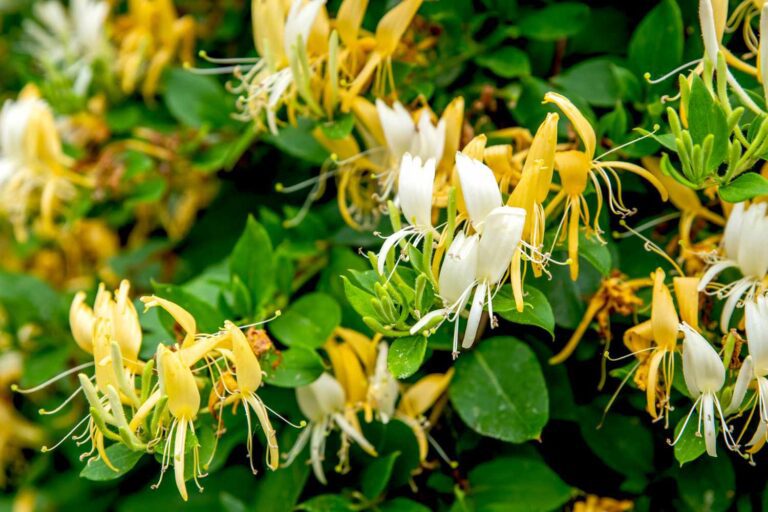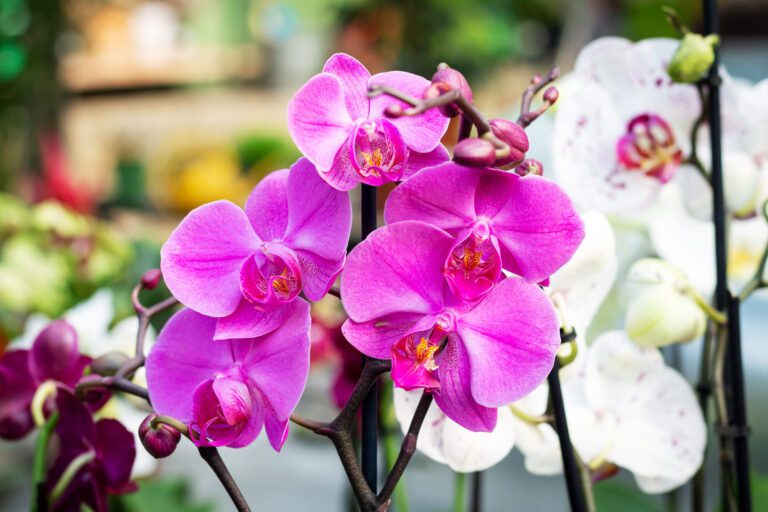Pink Lemonade Tree: A Unique Citrus Delight
Table of Contents
The Origin and History of Pink Lemonade Trees
Pink Lemonade trees have a fascinating origin story that dates back several decades. The unique citrus variety was first discovered by horticulturist John E. Layne in his backyard in California in the late 1950s. Layne noticed a mutated lemon tree with stunning pink-colored fruits, distinct from the typical yellow lemons. Intrigued by this unexpected find, Layne began propagating the tree, conducting further research, and ultimately developing what we now know as the Pink Lemonade tree.
The genetic mutation that gives Pink Lemonade fruits their distinctive pink hue occurs due to the presence of a pigment called anthocyanin. Anthocyanin is also found in other red or purple fruits, such as berries and grapes. It is believed that this mutation arose naturally within the lemon tree’s genetic makeup, resulting in the striking pink coloration of its fruit. Over time, Pink Lemonade trees have gained popularity among gardeners and citrus enthusiasts, thanks to their captivating appearance and unique flavor profile.
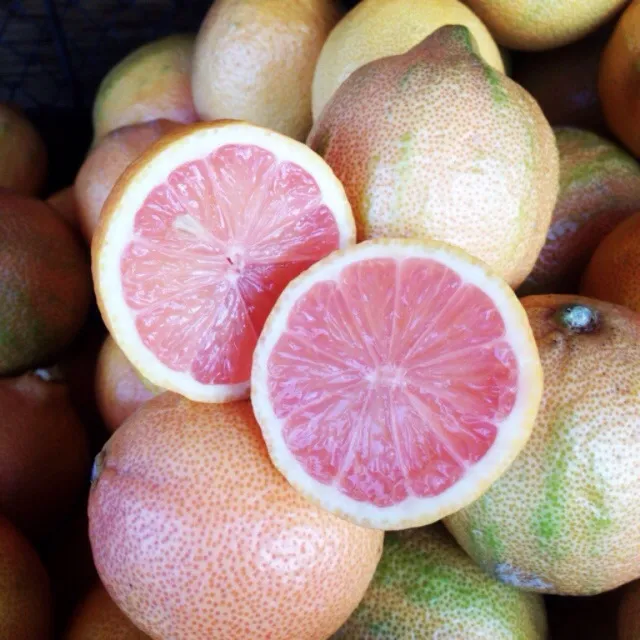
Understanding the Characteristics of Pink Lemonade Trees
Pink Lemonade trees are known for their unique characteristics that set them apart from other citrus trees. One of the most striking features of Pink Lemonade trees is their vibrant pinkish hue. The fruits of these trees exhibit a delightful pink coloration, which is a result of the natural pigments present in their flesh. This captivating appearance makes Pink Lemonade trees a visually appealing addition to any garden or landscape.
In addition to their stunning color, Pink Lemonade trees also boast a sweet and tangy flavor that is highly sought after by citrus enthusiasts. The taste of the fruits is reminiscent of traditional lemonade, but with a subtle twist. The flavor profile of Pink Lemonade is often described as less acidic and slightly sweeter compared to conventional lemons. This unique blend of flavors makes Pink Lemonade trees a popular choice among individuals who enjoy experimenting with different culinary creations.
When it comes to the growth habits of Pink Lemonade trees, they typically reach a height of around 10 to 15 feet, making them suitable for both large and small gardens. These trees thrive in warmer climates and require full sun exposure to flourish. In terms of soil, Pink Lemonade trees prefer well-draining soil that is rich in organic matter. Additionally, they are known to be relatively tolerant of different soil types, including sandy or clay soils.
As with any citrus tree, it is important to provide Pink Lemonade trees with adequate care and maintenance to ensure their optimal growth and productivity. Regular watering, fertilization, and proper pruning techniques are essential for promoting healthy tree development. Furthermore, it is crucial to monitor for any signs of diseases or pests, as early detection and treatment can prevent further damage to the tree.
With their distinctive characteristics, Pink Lemonade trees offer both aesthetic appeal and culinary versatility. By understanding their unique traits and providing the necessary care, gardening enthusiasts can enjoy the beauty of these trees in their own backyard, as well as delight in the delicious fruits they produce. Stay tuned as we delve further into the specifics of planting, maintenance, and harvesting of Pink Lemonade trees in the upcoming sections.
The Distinctive Appearance of Pink Lemonade Trees
The distinctive appearance of Pink Lemonade trees makes them a beautiful addition to any garden or landscape. These trees are known for their vibrant and eye-catching colors, which set them apart from other lemon tree varieties. The leaves of Pink Lemonade trees are a deep green shade, and they complement the tree’s unique fruit perfectly.
Speaking of the fruit, it is what truly makes Pink Lemonade trees stand out. The lemons produced by these trees have a stunning pink color that intensifies as they ripen. When fully mature, the fruit can be a deep blush pink or even a vibrant ruby red. This striking hue is what gives Pink Lemonade trees their name and makes them so visually appealing.
In addition to their distinctive color, the lemons on Pink Lemonade trees have a rounder shape and smoother skin compared to traditional lemons. The fruit is medium-sized and slightly elongated, with a glossy appearance that adds to its allure. All these factors combined give Pink Lemonade trees a captivating and unique appearance that is sure to catch the eye of anyone who sees them. Whether planted in a garden or used as an ornamental tree in a landscape, Pink Lemonade trees are sure to leave a lasting impression.
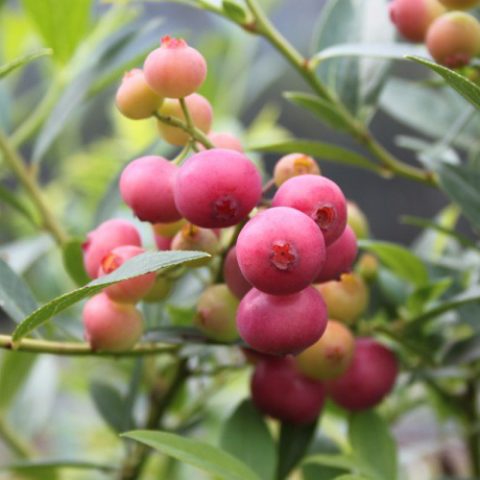
Climate and Soil Requirements for Growing Pink Lemonade Trees
Pink Lemonade trees are a unique variety of lemon tree that requires specific climate and soil conditions to thrive. These trees are known for their stunning pink lemons and their ability to add a pop of color to any garden. When considering planting a Pink Lemonade tree, it is crucial to understand its specific climate and soil requirements.
Firstly, Pink Lemonade trees prefer a Mediterranean climate with mild winters and warm, dry summers. They thrive in regions with temperatures ranging from 50 to 85 degrees Fahrenheit (10 to 29 degrees Celsius). While these trees can tolerate some frost, it is best to protect them during colder periods to prevent damage to the delicate blooms and fruits.
In terms of soil requirements, Pink Lemonade trees prefer well-draining soil with a slightly acidic to neutral pH level. A sandy loam soil that is rich in organic matter is ideal for these trees. Ensuring proper drainage is essential to prevent waterlogged soil, which can lead to root rot. Additionally, incorporating organic mulch around the base of the tree can help retain moisture and provide beneficial nutrients.
Overall, providing the right climate and soil conditions is crucial for the successful growth of Pink Lemonade trees. By understanding and meeting their specific requirements, gardeners can enjoy the beauty and bounty of these unique lemon trees in their own gardens.

Steps for Planting a Pink Lemonade Tree in Your Garden
Planting a Pink Lemonade tree in your garden is an exciting endeavor that can bring a unique and vibrant addition to your landscape. Before you start, it is important to choose a suitable location that meets the tree’s specific requirements. Pink Lemonade trees thrive in areas with full sun exposure, so find a spot where they can receive at least 6-8 hours of direct sunlight daily. Additionally, ensure the soil is well-drained to prevent waterlogged conditions that can stress the tree’s roots.
Once you have selected the perfect location, it’s time to prepare the planting hole. Dig a hole that is two to three times wider than the root ball and slightly shallower. Gently remove the tree from its container and carefully loosen the roots if they appear tightly wound. Place the tree in the center of the hole, ensuring that the bud union—the swollen area where the scion was grafted onto the rootstock—is level with or slightly above the soil surface. This will prevent the bud union from being submerged and potentially rotting. Fill the hole with soil, gently firming it around the roots to eliminate any air pockets.
With the planting complete, give the tree a thorough watering to settle the soil and ensure proper hydration for the roots. To help retain moisture and suppress weed growth, apply a layer of organic mulch around the base of the tree, keeping it a few inches away from the trunk to prevent rot and other diseases. Finally, regular watering is crucial during the tree’s establishment period, particularly during dry spells. Keep the soil evenly moist but avoid overwatering to prevent root rot. With consistent care and patience, you will soon witness the beauty and bounty of your thriving Pink Lemonade tree.
Essential Care and Maintenance Tips for Pink Lemonade Trees
Pink Lemonade trees require regular care and maintenance to thrive and produce abundant fruits. Here are some essential tips to ensure the optimal health and growth of your Pink Lemonade trees:
1. Watering: Pink Lemonade trees need regular watering, especially during the summer months. Ensure that the soil is consistently moist, but avoid overwatering, as it can lead to root rot. To determine the watering frequency, check the soil’s moisture level using a moisture meter or by inserting your finger into the soil up to the second knuckle. If it feels dry at that depth, it’s time to water.
2. Fertilization: Provide adequate nutrients to your Pink Lemonade trees through regular fertilization. Use a balanced fertilizer specially formulated for citrus trees, following the instructions on the label. Apply the fertilizer evenly around the tree’s drip line, avoiding direct contact with the trunk. Fertilize the tree once every four to six weeks during the growing season to support healthy growth and fruit production.
3. Pruning: Pruning plays a crucial role in maintaining the shape, size, and overall health of Pink Lemonade trees. Prune any dead, damaged, or diseased branches throughout the year. Additionally, remove any suckers or shoots emerging from the tree’s base as they can divert energy from the main tree. Prune the tree in late winter or early spring before new growth begins to shape the canopy and promote airflow, which helps prevent fungal diseases.
Regular care and maintenance, including proper watering, fertilization, and pruning, will ensure that your Pink Lemonade trees stay healthy, vibrant, and fruitful. Stay tuned for valuable insights on common diseases and pests that can affect these trees and how to identify and treat them effectively.
Pruning Techniques to Enhance the Growth of Pink Lemonade Trees
Pruning Techniques for Pink Lemonade Trees
Pruning plays a crucial role in enhancing the growth and productivity of pink lemonade trees. By implementing the right techniques, gardeners can ensure that their trees develop a strong structure, produce abundant fruit, and maintain optimal health. Here are some key pruning techniques to consider for your pink lemonade trees:
1. Training the Scaffold Branches: During the early years of a pink lemonade tree’s growth, it is essential to train the scaffold branches. These primary branches form the basic framework of the tree and determine its overall shape. To encourage balanced growth, remove any competing branches or those that grow inward towards the center. By maintaining an open and well-spaced structure, you allow sunlight and air circulation to penetrate all parts of the tree, reducing the risk of disease and promoting fruit production.
2. Thinning out Overcrowded Branches: As your pink lemonade tree matures, it may develop branches that grow too close together or become overcrowded. It is important to selectively remove some of these branches to prevent shading and competition for nutrients. Thinning out the tree’s canopy ensures that each branch receives ample light and enables better air circulation, reducing the risk of fungal diseases. Use clean and sharp pruning tools to make smooth cuts just outside the branch collar, promoting quick healing and minimizing the risk of infection.
By employing these pruning techniques, gardeners can optimize the growth and fruit production of their pink lemonade trees. However, it is crucial to remember that excessive pruning can be detrimental to the tree’s health. Therefore, it is recommended to consult with local gardening experts or experienced arborists for specific guidance tailored to your region and tree’s needs.
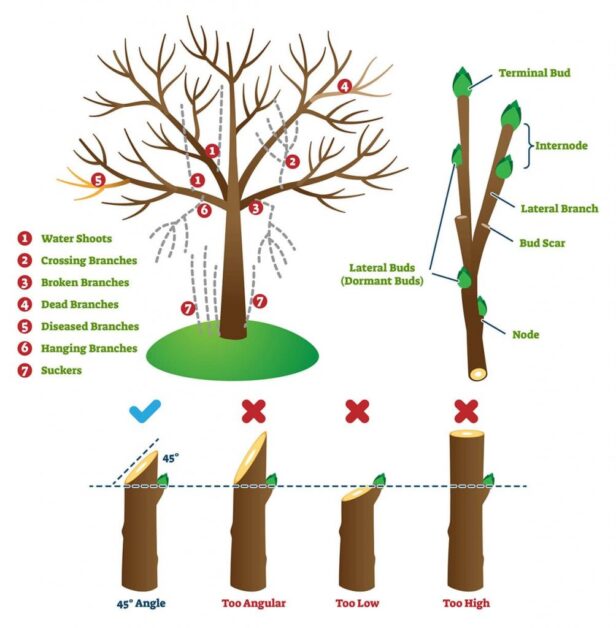
Identifying and Treating Common Diseases and Pests in Pink Lemonade Trees
Pink Lemonade trees are generally resilient and can withstand various environmental conditions. However, they are not immune to certain diseases and pests that may affect their overall health and productivity. It’s essential for gardeners to be able to identify and treat these issues promptly to ensure the well-being of their Pink Lemonade trees.
One common disease that affects Pink Lemonade trees is citrus canker. This bacterial infection manifests as raised corky lesions on the leaves, stems, and fruits. If left untreated, citrus canker can weaken the tree and lead to defoliation and poor fruit quality. To treat this disease, affected plant parts should be pruned off and destroyed. Additionally, copper-based fungicides can be applied to prevent the spread of the infection.
Another pest that can cause havoc to Pink Lemonade trees is aphids. These small, soft-bodied insects feed on the sap of the tree, leading to stunted growth and distorted leaves. To control aphid infestations, natural predators such as ladybugs can be introduced into the garden. Alternatively, horticultural oils or insecticidal soaps can be used as a safe and effective treatment option. Regular monitoring and early intervention are crucial to prevent the aphid population from getting out of hand.
Certainly! Here’s a table summarizing common diseases and pests that can affect Pink Lemonade Trees, along with their identification and treatment methods:
| Issue | Description | Identification | Treatment |
|---|---|---|---|
| Aphids | Small insects that suck sap from leaves, twigs, and other soft tissues. | – Curling leaves – Yellowing citrus leaves – Slowed growth – Sticky substance on leaves and fruit | – Use organic, biological, or chemical control measures – Homemade aphid spray: 1 oz water, crushed garlic, cayenne pepper, vinegar, and liquid soap |
| Citrus Leaf Miner | Winged insects that lay eggs on lemon tree leaves; larvae burrow inside leaves. | – Silver-like coloring within leaf veins – Presence of eggs on affected surfaces | – Safeguard with chemical sprays containing imidacloprid |
| Sooty Mold | Fungal growth caused by insect infestations; appears as black, powdery coating on leaves. | – Control insect infestation first – Spray with Neem oil insecticide – Treat mold with liquid copper fungicide |
Remember to regularly inspect your Pink Lemonade Trees for signs of these issues and take appropriate action to keep them healthy!
Harvesting and Using the Fruits of Pink Lemonade Trees
Harvesting and Using the Fruits of Pink Lemonade Trees
Once your Pink Lemonade tree has matured and begun to produce fruit, it is an exciting time to enjoy the fruits of your labor. The vibrant, pink-hued lemons that adorn the branches are not only visually stunning but also offer a unique flavor that sets them apart from traditional lemons. When it comes to harvesting, timing is key. The best time to pick your Pink Lemonade fruits is when they reach a ripe, blush-pink color. Gently twist the fruit until it detaches from the branch, being careful not to damage the tree or other fruits in the process.
Pink Lemonade fruits can be used in a variety of culinary applications, adding a delightful twist to a range of dishes and beverages. With their tart yet refreshing flavor, they make an excellent addition to lemonade, cocktails, and desserts. Whether you prefer a classic glass of Pink Lemonade on a warm summer day or a tangy Pink Lemonade sorbet to satisfy your sweet tooth, the options are endless. Additionally, the vibrant color of the fruit makes it an appealing garnish for salads, seafood dishes, or even as a decorative element in cocktails. The versatility of Pink Lemonade fruits allows for endless experimentation in the kitchen, encouraging the creation of unique and enticing recipes.
Exploring the Unique Flavor Profile of Pink Lemonade
Pink lemonade is a unique and refreshing beverage that offers a distinct flavor profile, setting it apart from traditional lemonade. The characteristic pink hue of this drink is not only visually appealing but also indicative of the delightful taste that awaits.
The flavor of pink lemonade is a delightful balance between tartness and sweetness. It possesses a tangy citrus flavor that is reminiscent of regular lemonade but with an added twist. The addition of various fruits, such as raspberries, strawberries, or cranberries, contributes to the subtle yet noticeable fruity undertones that enhance the overall taste experience. This infusion of fruity flavors elevates pink lemonade to new heights and creates a refreshing and thirst-quenching beverage that is beloved by many.
The flavor profile of pink lemonade makes it a versatile and exciting choice for various culinary applications. From cocktails and mocktails to desserts and marinades, the distinct taste of pink lemonade adds a vibrant and refreshing element to recipes. Its unique blend of tartness and sweetness complements a wide range of flavors, making it a popular choice among chefs and enthusiasts alike. Whether you’re looking to create a refreshing summer drink or add a zing to your favorite dish, pink lemonade is sure to deliver a burst of flavor that will tantalize your taste buds.
Culinary Applications and Recipes Featuring Pink Lemonade
With its unique flavor and vibrant pink hue, Pink Lemonade is a fascinating addition to the culinary world. This delightful fruit lends itself to a variety of applications, both savory and sweet. Its tart and tangy taste, combined with subtle hints of berry, make it a versatile ingredient that can elevate any dish.
One popular culinary application of Pink Lemonade is in refreshing beverages. From simple lemonade spritzers to more complex cocktails, the infusion of Pink Lemonade adds a vibrant twist to any drink. Its distinct flavor pairs well with other fruits such as strawberries, raspberries, or even watermelon, creating a refreshing medley of tastes. Whether enjoyed on a hot summer day or as a celebratory toast, Pink Lemonade beverages are sure to impress.
The culinary creativity doesn’t stop at drinks, though. Pink Lemonade can also be used in a variety of savory recipes, bringing a unique flavor profile to dishes. Its tangy notes can balance out the richness of sauces used in seafood or poultry dishes. Additionally, Pink Lemonade can be used as a marinade or glaze to impart a tangy and slightly sweet taste to grilled meats or roasted vegetables. The possibilities are endless when it comes to experimenting with the culinary versatility of Pink Lemonade.
Health Benefits Associated with Consumption of Pink Lemonade
Pink lemonade is not only a refreshing and delicious beverage, but it also offers several health benefits that make it a great addition to your diet. One of the main advantages of consuming pink lemonade is its high vitamin C content. As an antioxidant, vitamin C helps to strengthen the immune system and fight off harmful free radicals in the body. This can reduce the risk of developing chronic diseases such as heart disease and cancer.
In addition to its vitamin C content, pink lemonade also contains a good amount of other essential nutrients. It is a good source of potassium, which is vital for maintaining proper heart and muscle function. Pink lemonade also provides small amounts of calcium, magnesium, and folate, all of which play important roles in maintaining overall health.
Pink Lemonade Tree Varieties and Hybrids Worth Considering
Pink lemonade trees are a fascinating and unique addition to any garden, offering a delightful twist to the traditional lemon tree. When it comes to considering different varieties and hybrids of pink lemonade trees, there are a few standout options worth exploring. One such variety is the Citrus limon ‘Pink Variegated Eureka’, which boasts stunning pink variegated leaves that provide a striking visual appeal. This variety not only adds a vibrant touch to your garden but also produces delicious pink-tinted lemons that are perfect for making refreshing pink lemonade.
Another enticing option to consider is the Citrus limon ‘Ponderosa’, a hybrid that combines pink lemonade tree characteristics with the larger fruit size of the Ponderosa lemon. This hybrid offers a captivating blend of aesthetics and functionality, featuring attractive pink-tinted lemons that can grow to be as large as grapefruits. The unique flavor profile of the Ponderosa pink lemonade is renowned for its sweetness and tanginess, making it a versatile choice for both culinary and beverage applications. Whether you’re looking to make thirst-quenching lemonades or add a zesty kick to your favorite dishes, the Ponderosa hybrid is a remarkable option to consider.
As gardeners and citrus enthusiasts continue to explore the world of pink lemonade trees, it is essential to note that each variety and hybrid brings its own distinct qualities and attributes. By carefully considering the specific characteristics of each option, gardeners can select a pink lemonade tree variety or hybrid that best suits their unique preferences and gardening conditions. Whether you opt for the Citrus limon ‘Pink Variegated Eureka’ with its striking appearance or the Citrus limon ‘Ponderosa’ hybrid with its larger-sized fruits, exploring these varieties and hybrids will undoubtedly add a touch of novelty and zest to your garden.
Pink Lemonade Trees as Ornamental Additions to Your Landscape
Pink Lemonade Trees can be a captivating addition to any landscape, with their unique and eye-catching appearance. These trees are known for their intriguing pink foliage, which adds a splash of vibrant color to gardens and outdoor spaces. The pink lemonade tree, also known as the variegated pink lemon tree (Citrus limon ‘Pink Lemonade’), features variegated leaves that showcase various shades of pink, white, and green. This stunning color combination brings a touch of whimsy and beauty to any garden design.
Not only are pink lemonade trees visually appealing, but they also offer the added benefit of producing delicious and tangy fruits. The pink lemonade fruits are a pale yellow on the inside and have a pink hue on the outside, making them a striking addition to fruit displays and culinary creations. These unique fruits can be used in a variety of ways, such as making refreshing pink lemonade or adding a distinct flavor to cocktails, marinades, and desserts. With their ornamental beauty and culinary versatility, pink lemonade trees are sure to impress both garden enthusiasts and food lovers alike.
Pink Lemonade Trees are delightful additions to any landscape, combining ornamental beauty with a unique twist on the classic lemon. Let’s create a table highlighting their features:
| Pink Lemonade Tree | Description |
|---|---|
| Scientific Name | Citrus limon |
| Days to Harvest | 4-9 months |
| Light | Full to partial sun |
| Water | Moderate; water weekly |
| Soil | Well-draining |
| Fertilizer | Citrus formulation |
| Pests | Mites, thrips, scales, aphids, lepidopterans, Asian citrus psyllid |
| Diseases | Phytophthora root rot, Anthracnose, Botrytis, Huanglongbing (HLB) |
| Unique Features | – Variegated foliage: Beautiful green and white leaves.<br>- Striped peel: The peel transitions from green and yellow to pink and yellow as it ripens.<br>- Pink flesh: The fruit inside is a delightful pink color. |
| Culinary Use | While not the key ingredient for traditional pink lemonade, these variegated lemons can be used just like regular lemons. They’re great for cocktails, desserts, and décor. |
| Fruit Production | Pink Lemonade Trees may not fruit as abundantly as conventional Eureka lemon trees, but with proper care, they should yield enough for a single household. |
| Climate Suitability | Ideal for warm climates with mild winters. Can be grown in containers and brought indoors during freezing temperatures. |
Success Stories and Testimonials from Pink Lemonade Tree Growers
When it comes to the success stories and testimonials from pink lemonade tree growers, one thing becomes abundantly clear: the unique charm and beauty of these trees truly captivate the hearts of garden enthusiasts. Many growers have experienced a sense of accomplishment and joy in nurturing these trees from saplings to flourishing plants.
One pink lemonade tree grower, Mr. Smith, shared his experience of how the tree became a focal point in his garden. He described how the vibrant hues of the pink-tinged fruits brightened his landscape and became a topic of conversation among his neighbors. Not only did he enjoy the aesthetic appeal of the tree, but he also relished the sweet and tangy flavor of the pink lemonade fruits that he harvested. Mr. Smith’s success with the pink lemonade tree serves as a testament to the tree’s adaptability and rewards for attentive care.
Another testimonial comes from Ms. Johnson, who resides in an urban setting with limited garden space. She was initially skeptical about growing a pink lemonade tree but was pleasantly surprised at how well it adapted to container gardening. Ms. Johnson raved about the beauty of the tree’s foliage, especially when it bloomed with delicate pink flowers. Equally impressive to her was the tree’s ability to produce a bountiful crop of pink lemonade fruits, despite its restricted growing conditions. Her positive experience serves as inspiration for those who dream of incorporating a touch of nature and citrus flavor into their urban dwellings.
These success stories and testimonials stand as evidence of the joy and fulfillment that come with cultivating pink lemonade trees. Whether it be the enchanting visual appeal, the delectable fruits, or the adaptability to various growing spaces, these trees have undoubtedly left a lasting impression on the gardening community.
Where to Buy Pink Lemonade Trees and Tips for Selecting the Best One
To bring the vibrant beauty and unique flavor of pink lemonade trees to your own garden, it’s important to know where to source these magnificent trees and how to select the best one. When it comes to purchasing pink lemonade trees, it’s recommended to explore reputable nurseries, both online and in-person, that specialize in fruit trees and rare varieties. These nurseries typically have a wide selection of pink lemonade trees available, along with knowledgeable staff who can provide guidance and answer any questions you may have. Additionally, reputable nurseries often ensure that their trees are healthy, disease-free, and of good quality, giving you the best chance of success in growing your own pink lemonade tree.
When selecting a pink lemonade tree, there are a few key factors to consider. First and foremost, make sure to choose a tree that is suited to your climate and growing conditions. Pink lemonade trees thrive in warm, Mediterranean climates, but there are also dwarf varieties available that can be grown in containers in cooler regions. Look for trees that are well-established with a strong root system, as this indicates a healthier and more resilient tree. It’s also advisable to inspect the foliage and branches for any signs of disease or pests. Select a tree that has vibrant green leaves and an overall robust appearance. Lastly, consider the size of the tree and whether it will fit well into your garden or chosen growing space. By taking these factors into account, you can ensure that you’re selecting a pink lemonade tree that will flourish and provide you with delicious fruits for years to come.
for more information watch the below video.
Can I grow a Pink Lemonade tree in a container or pot?
Yes, Pink Lemonade trees can be grown in containers or pots. However, ensure that the container is large enough to accommodate the tree’s roots and provides proper drainage.
How long does it take for a Pink Lemonade tree to bear fruit?
Pink Lemonade trees typically start bearing fruit within 2-4 years after planting, depending on the growing conditions and care provided.
Can Pink Lemonade trees tolerate cold temperatures?
Pink Lemonade trees are relatively cold-hardy and can tolerate temperatures down to around 20°F (-6°C). However, they may require protection or additional care during periods of frost or freezing temperatures.
Are Pink Lemonade trees self-pollinating?
No, Pink Lemonade trees are not self-pollinating. They require cross-pollination from another citrus tree, such as a lemon or orange tree, to produce fruit. Be sure to have compatible citrus trees nearby for optimal fruit production.
Can I grow a Pink Lemonade tree in a humid climate?
Pink Lemonade trees prefer drier climates but can tolerate some humidity. However, in excessively humid regions, proper air circulation and occasional misting of the leaves may be necessary to prevent fungal diseases.
Do Pink Lemonade trees require a lot of sunlight?
Yes, Pink Lemonade trees thrive in full sunlight exposure. They require at least 6-8 hours of direct sunlight daily to grow and produce abundant fruit.
How often should I water my Pink Lemonade tree?
Pink Lemonade trees prefer well-drained soil and should be watered deeply but infrequently. Water them every 7-10 days, ensuring the soil is moist but not waterlogged. Adjust the frequency based on climate and rainfall.
Can Pink Lemonade trees be grown from seeds?
Yes, Pink Lemonade trees can be grown from seeds, but it’s important to note that the resulting tree may not exhibit the exact characteristics of the parent tree. It’s recommended to purchase a grafted Pink Lemonade tree for consistent traits.
Do Pink Lemonade trees require any special fertilizers?
Pink Lemonade trees benefit from regular applications of citrus-specific fertilizer, which provides essential nutrients. Look for fertilizers with a balanced NPK ratio and micronutrients formulated specifically for citrus trees.
How do I know when the Pink Lemonade fruits are ripe for harvesting?
Pink Lemonade fruits are ready for harvest when they turn a vibrant pink color and feel slightly soft when gently squeezed. It’s important not to leave them on the tree for too long, as they may become overripe and lose flavor.

Nicole Burke is a dynamic writer at SouthElMonteHydroponics, fueled by her passion for horticulture and environmental sustainability. Armed with a degree in Environmental Science from a renowned institution, Nicole’s expertise lies in hydroponic gardening, organic farming, and biodiversity conservation. Her insatiable curiosity and love for nature drive her to explore innovative techniques in hydroponics, seeking to revolutionize the way we grow crops in urban environments. Nicole’s writing reflects her deep commitment to promoting eco-conscious practices and fostering a deeper connection between humans and the natural world. Through her engaging storytelling, she inspires others to embrace sustainable living and harness the power of hydroponics for a greener future.

